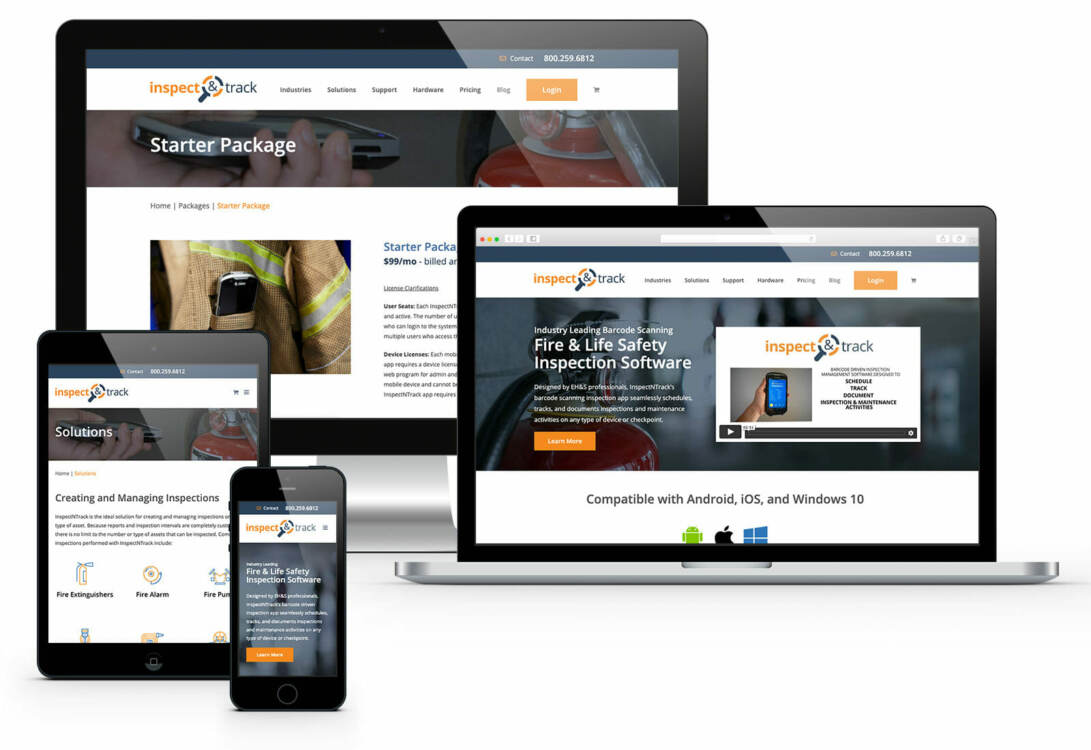Get high-quality design solutions from Kelowna Website Development.
Learn How Website Design Works to Develop Involving Individual Experiences
Internet design plays an important function in forming individual experiences across digital systems. By understanding essential principles like use and visual power structure, developers can create internet sites that not just attract site visitors however likewise encourage them to engage. Reliable formats and well-thought-out color pattern can significantly influence customer actions. However, there are deeper factors to consider that exceed visual appeals, which are important for cultivating a comprehensive online atmosphere. What are these components that can change an easy internet site right into an engaging experience?
Understanding the Principles of Internet Layout
The structure of reliable website design relaxes on a set of core principles that direct the creation of engaging user experiences. These principles include use, access, and aesthetic hierarchy, each playing a vital role in how individuals engage with an internet site. Use guarantees that individuals can browse intuitively, locating info easily. Access expands the reach of a site, suiting users with varied needs and abilities. Aesthetic pecking order directs customers' attention to crucial elements, facilitating less complicated understanding of material. In addition, uniformity in design aspects fosters experience, enhancing customer comfort. Color plans and typography ought to complement the general aesthetic while keeping readability. Additionally, receptive style adapts to various devices, assuring a smooth experience throughout systems. By sticking to these concepts, developers produce websites that not just mesmerize users yet additionally guide them towards desired actions, inevitably boosting interaction and fulfillment.
The Value of Layout in Individual Experience
Reliable design serves as a backbone for user experience, influencing exactly how site visitors engage and perceive with a website. A well-structured format guides customers' interest, making it less complicated for them to browse and discover pertinent info. By arranging content practically, developers can develop a seamless flow that decreases cognitive tons, permitting individuals to focus on their jobs.

Additionally, receptive designs guarantee that websites operate well throughout numerous devices, keeping use despite display size. Inevitably, a thoughtful layout is vital in developing an interesting individual experience that cultivates fulfillment, encourages exploration, and boosts the probability of conversions. Focus to format design is important for successful web interactions and overall user involvement.
Color Schemes and Their Impact on Involvement
Exactly how do shade schemes influence user interaction on websites? Color design play a vital function fit individual understanding and habits. They stimulate feelings and can considerably affect exactly how customers interact with a website. As an example, warm colors like red and orange can stimulate enthusiasm and urgency, while cooler tones like blue and environment-friendly often communicate peace and count on.
In addition, uniformity in color usage cultivates brand name recognition, making customers most likely to engage More Help with familiar visuals. Reliable shade contrast improves readability, ensuring users can easily navigate content without strain. Additionally, the emotional associations of colors can lead individuals toward wanted activities, such as clicking a call-to-action switch.
Eventually, an attentively selected shade plan can not just draw in users but likewise enhance their general experience, causing greater engagement rates and increased contentment. Web developers must thoroughly take into consideration shade choices to enhance customer interaction and cultivate a positive setting.
Navigation Finest Practices for User-Friendly Internet Site
What makes navigation easy to use and intuitive on a web site? Efficient navigation depends on clear framework and rational power structure. Users need to easily locate menus, normally placed at the top or side of the page, enabling for quick access to essential areas. Uniformity in layout components-- such as font styles, colors, and button designs-- helps with experience, boosting individual convenience. Detailed labels for navigating web links are vital; they have to accurately stand for the web content individuals can anticipate when clicked.
Furthermore, incorporating a search attribute can aid individuals in locating certain details swiftly. Dropdown menus can organize subcategories without overwhelming visitors, while breadcrumb routes help browse around this web-site customers track their place within the site. Mobile optimization is additionally vital, as touch user interfaces necessitate larger switches and responsive designs. Eventually, prioritizing simpleness and quality in navigating allows customers to involve extra successfully with the web site, promoting a favorable user experience.
Guaranteeing Accessibility for All Users
Making certain accessibility for all individuals is vital in web style, as approximately 15% of the worldwide populace deals with some kind of handicap. Web developers have to focus on inclusivity by adhering to established standards like the Internet Web Content Access Guidelines (WCAG) These guidelines offer necessary standards that improve use for individuals with aesthetic, auditory, motor, and cognitive impairments.
Secret techniques consist of making use of detailed alt text for pictures, making certain sufficient color contrast, and giving keyboard navigability. In addition, executing screen reader compatibility can greatly enhance the experience for aesthetically damaged customers.
Testing websites with diverse customer teams, consisting of those with handicaps, can disclose potential barriers and inform necessary adjustments. Educating style teams regarding availability can foster a culture of inclusivity, inevitably developing a more appealing and easy to use web experience. By prioritizing ease of access, designers not just increase their target market however also show social obligation and commitment to equal accessibility for all.
Frequently Asked Questions
What Devices Can I Use to Design My Internet site?
To make an internet site, one can use tools like Adobe XD, Figma, Map Out, and WordPress. These platforms offer numerous functions for layout, prototyping, and material administration, assisting in the production of practical and aesthetically attractive websites.
Exactly How Can I Check My Internet site's User Experience?
To test a web site's user experience, one can utilize devices like Google Analytics for actions tracking, their website conduct use testing with actual individuals, and collect comments via surveys to recognize areas for renovation and enhance total engagement.
What Prevail Blunders in Website Design to Avoid?
Typical mistakes in web layout consist of chaotic layouts, bad navigating, lack of mobile optimization, slow-moving loading times, and making use of too lots of font styles or shades. These issues can impede customer experience and decrease general website effectiveness.
Exactly how Usually Should I Update My Web site's Style?
A web site's design must be upgraded every one to three years, or more regularly if considerable trends arise or individual responses indicates frustration. Regular updates enhance visual appeals and performance, ensuring a interesting and fresh user experience.
Can I Learn Website Design Without Coding Knowledge?
Yes, one can learn website design without coding expertise. Numerous devices and systems permit users to create aesthetically enticing sites with drag-and-drop interfaces, allowing creative thinking without the complexities of programming languages.
